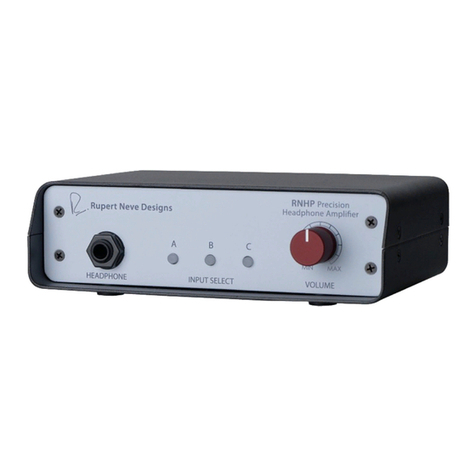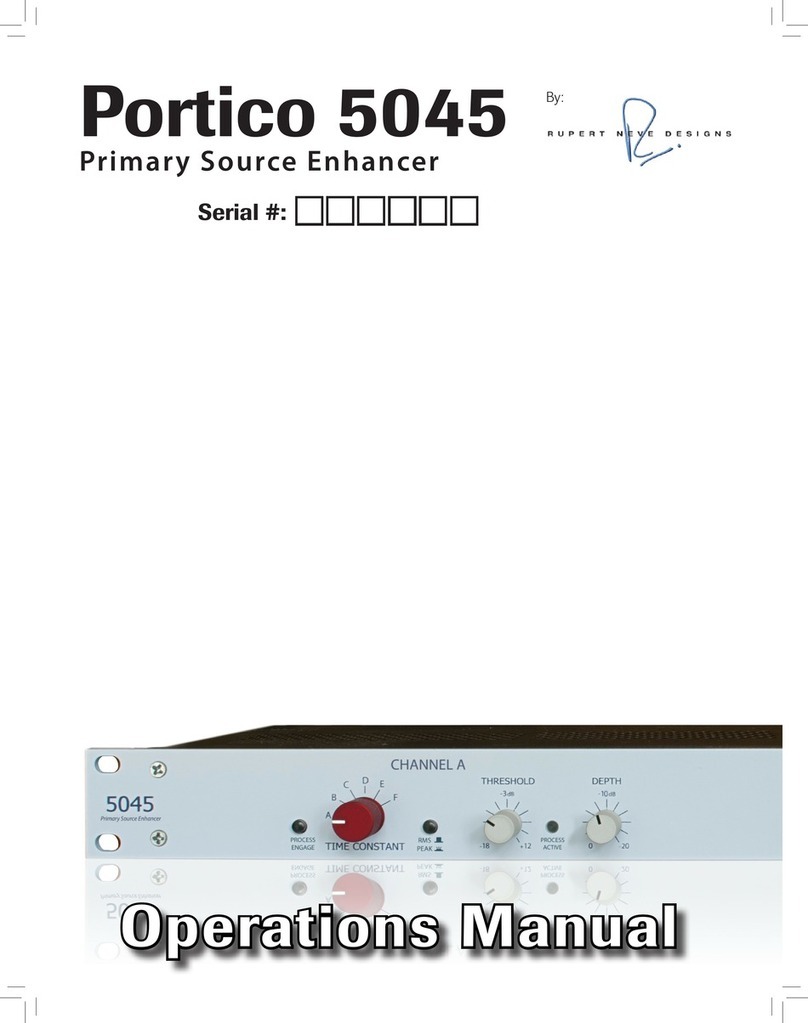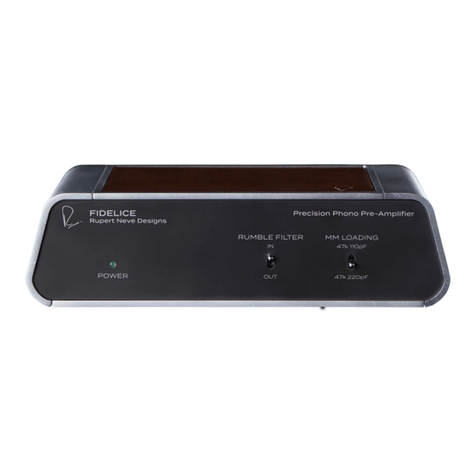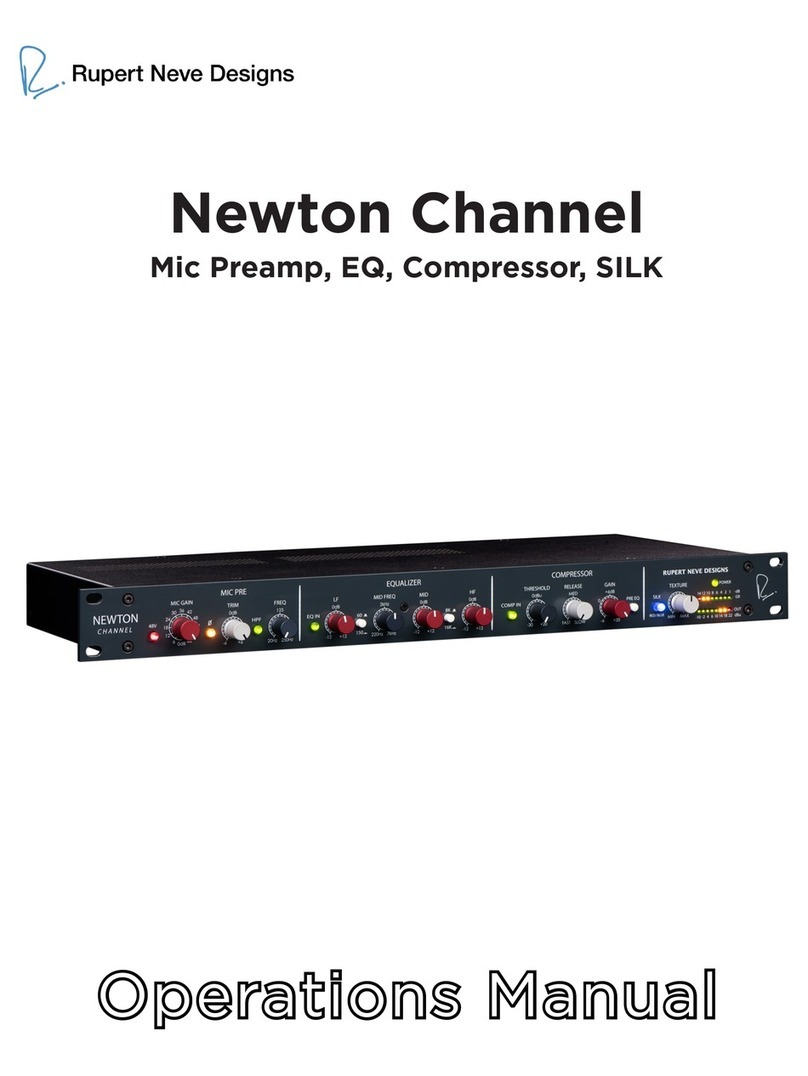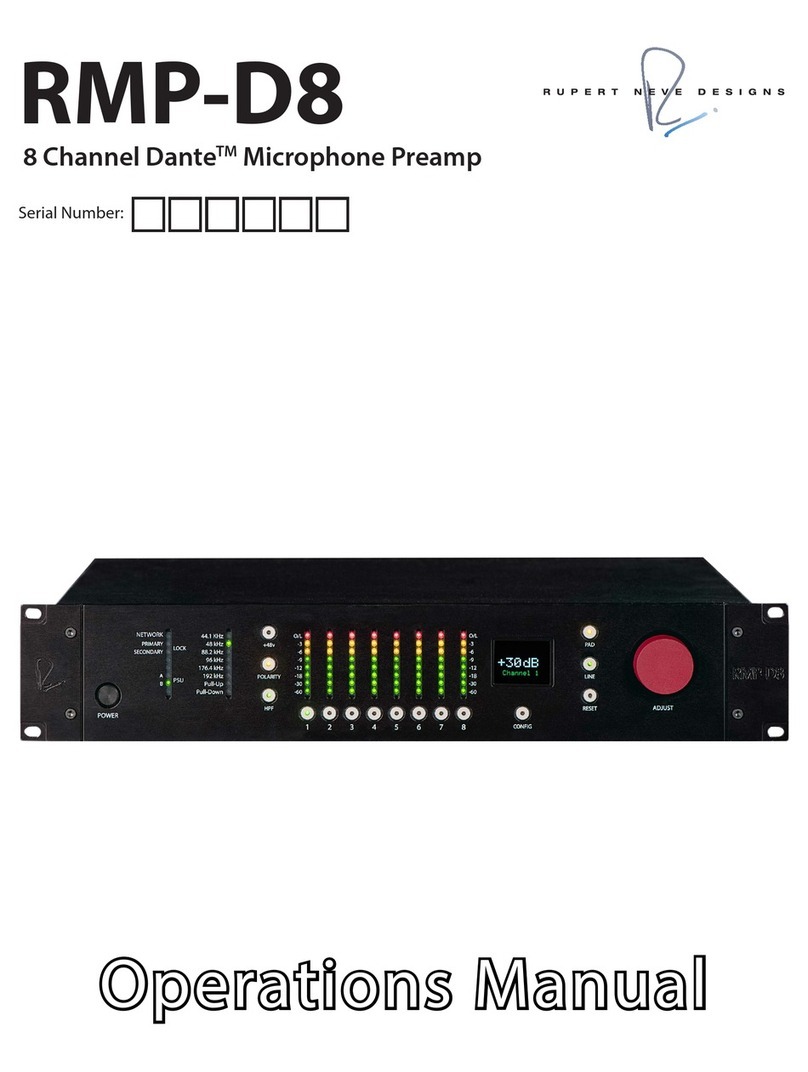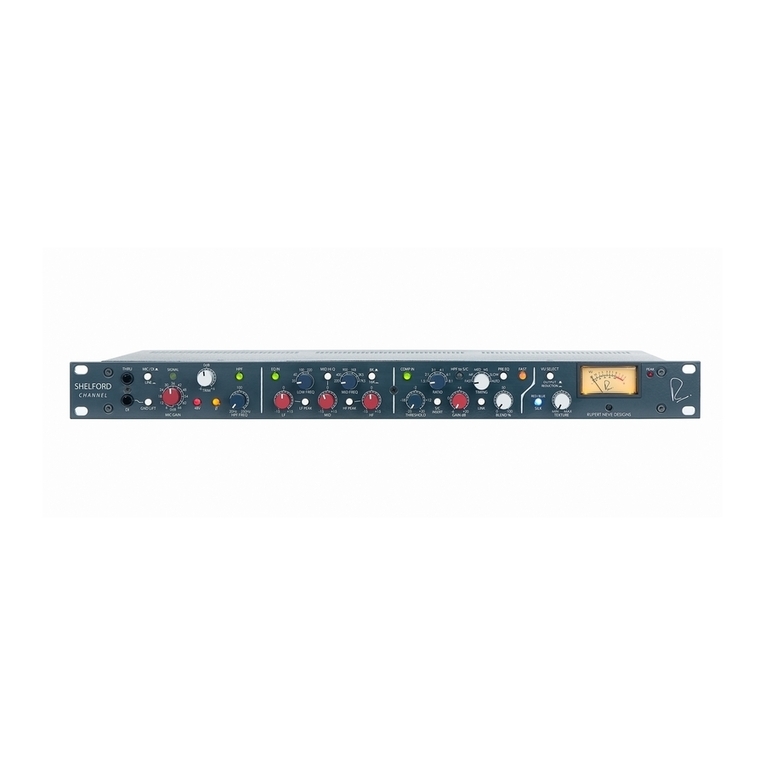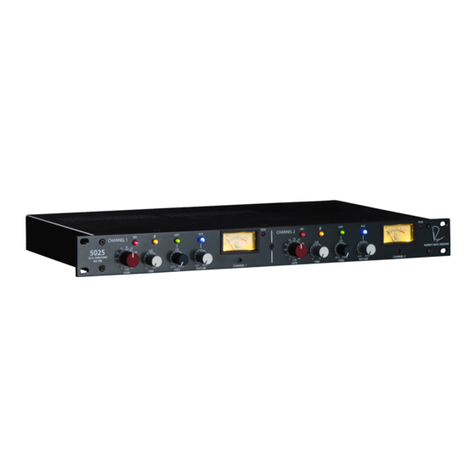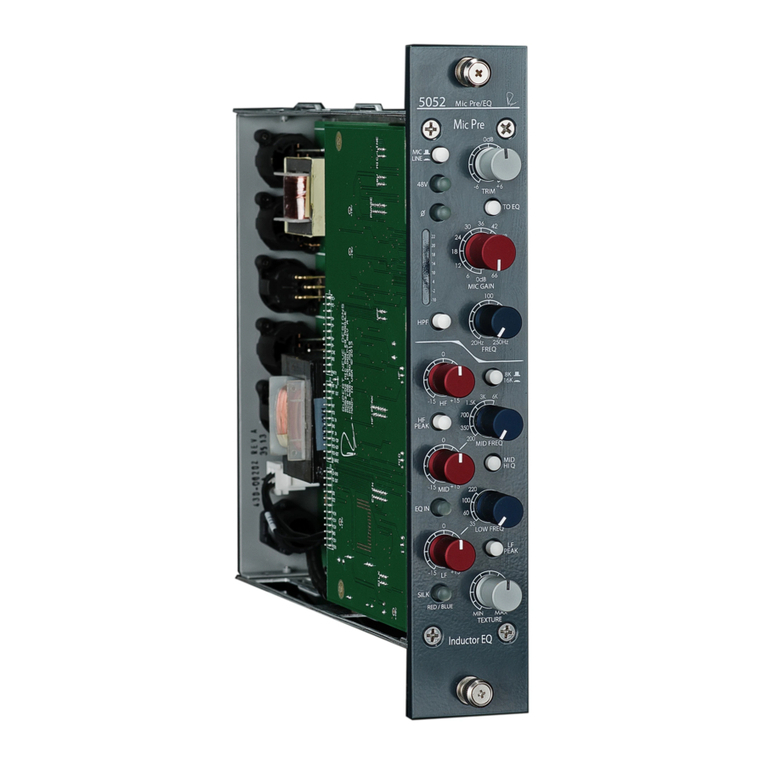
7
sound may well have a awed data bank! Quality recording equipment should be capable of retaining
“natural” sound and this is indeed the traditional measuring stick. And “creative” musical equipment
should provide the tools to manipulate the sound to enhance the emotional appeal of the music without
destroying it. Memory and knowledge of real acoustic and musical events may be the biggest tool and
advantage any recording engineer may possess.
One needs to be very careful when one hears traces of distortion prior to recording because some avors
of distortion that might seem acceptable (or even stylish) initially, may later prove to cause irreparable
damage to parts of the sound (for example, “warm lows” but “harsh sibilance”) or in louder or quieter
sections of the recording. Experience shows that mic preamps and basic console routing paths should
offer supreme delity otherwise the engineer has little control or choice of recorded “color” and little
recourse to undo after the fact. Devices or circuits that can easily be bypassed are usually better choices
when “color” is a consideration and this particularly is an area where one might consider comparing
several such devices. Beware that usually deviations from linearity carry at least as much long-term
penalty as initial appeal, and that one should always be listening critically when recording and generally
“playing it safe” when introducing effects that cannot be removed.
1. Tsutomu Oohashi, Emi Nishina, Norie Kawai, Yoshitaka Fuwamoto, and Hishi Imai. National
Institute of Multimedia Education, Tokyo. “High Frequency Sound Above the Audible Range,Affects Brain Electric Activity and
Sound Perception” Paper read at 91st. Convention of the A.E.S.October 1991. Section 7. (1), Conclusion.
2. Miland Kunchur,Depart of Physics and Astronomy, University of South Carolina. “Temporal resolution of hearing probed
by bandwidth restriction”, M. N. Kunchur, Acta Acustica united with Acustica 94, 594–603 (2008) (http://www.physics.
sc.edu/kunchur/Acoustics-papers.htm)
3. Miland Kunchur,Depart of Physics and Astronomy, University of South Carolina.Probing the temporal resolution and
bandwidth of human hearing , M. N. Kunchur, Proc. of Meetings on Acoustics (POMA) 2, 050006 (2008)
5017 USAGE NOTES
The 5017’s small size and feature set allows it to be used in many different ways, in both studio and live
environments. The diagrams on the following pages show how to use the 5017 as a single channel or
dual channel module. Here are some creative things to try:
For vocals, take two mics, your favorite condenser plugged into the Mic Input, and a SM57 or SM58 set
up 6 inches closer to the vocalist and plugged into another mic pre, then into the 5017 Inst Input. Adjust
Vari-Phase to taste, and maybe add some light compression from the 5017 followed by your usual vocal
compressor, which may behave even nicer because of that touch of “pre-compression” from the 5017.
For synth(or another instrument), set the signal chain as seen for single channel use(Page 8), but
place the mic a little further than normal from the amp, or pointed away from the amp to incorporate
more room reections. With the mic even further away, we might suggest using the Mic Pre Output
sent to a separate track and the Blend control set to INST so you end up with separate “dry” and a
“room” tracks(See Page 9 setup). In the latter example, the Phase Sweep may be rather subtle and the
compressor can be set to operate on either the DI (dry) or mic (room) signal depending on the internal
jumper. With the compressor set to the mic path, you may nd this accentuates the room nicely, and
if you are changing jumpers, you might want to audition the “slow” compressor jumper setting while
you are there. This may work also work well for “re-amping” some tracks already recorded on the DAW,
especially given the Phase Sweep and Compressor in the 5017.
